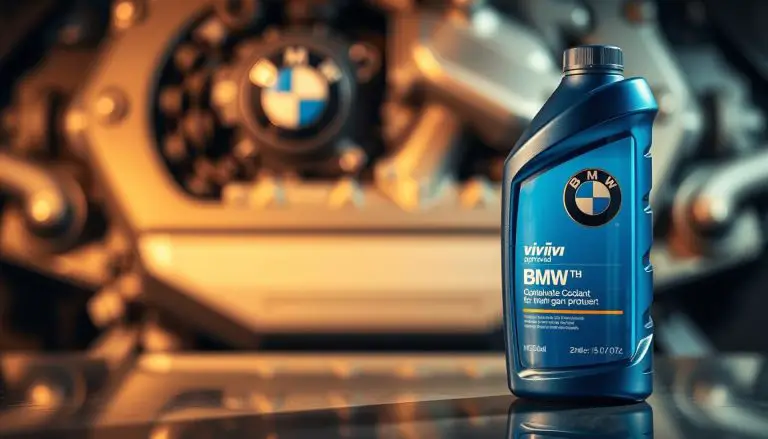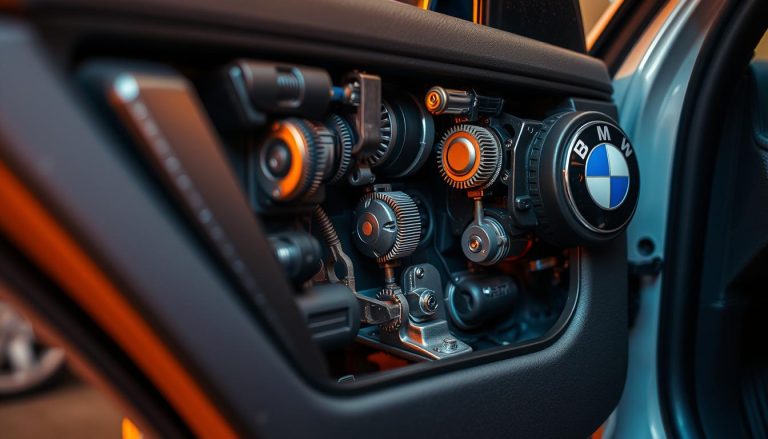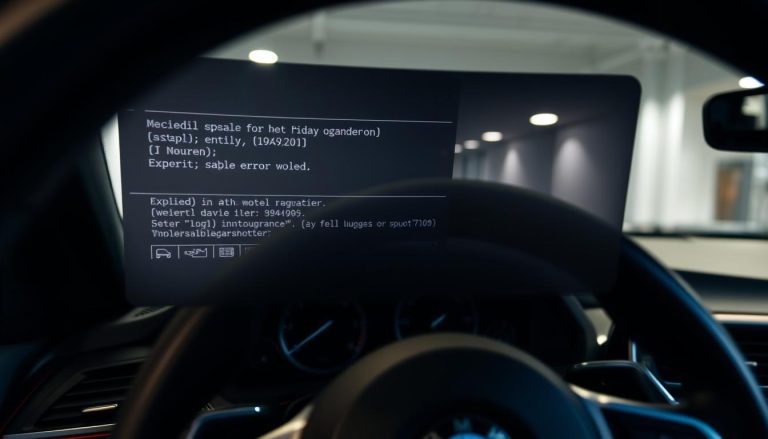The BMW 335i, a pinnacle of high-performance vehicles, has captivated the hearts of many automotive aficionados. Yet, certain model years have been marred by reliability issues, rendering it imperative for prospective buyers to be cognizant of these challenges when contemplating a used BMW335i.
Grasping the reliability concerns tied to specific model years is essential for buyers to make well-informed decisions, thus averting the financial burden of unforeseen repairs. This article delves into the BMW335i reliability issues, pinpointing the model years that should be avoided.
Key Takeaways
- Certain model years of the BMW 335i are more prone to reliability issues.
- Understanding these issues is crucial for used BMW335i buyers.
- Reliability concerns can lead to costly repairs if not addressed.
- Identifying problematic model years can help buyers make informed decisions.
- Researching the reliability of a used BMW335i is essential before making a purchase.
The BMW335i: A Performance Legacy
The BMW335i’s legacy is rooted in innovative engineering and exhilarating performance. As a cornerstone in BMW’s portfolio, the 335i has undergone substantial transformations, captivating aficionados globally.
Evolution from E90 to F30 Generations
The BMW335i’s metamorphosis from the E90 to the F30 generations is noteworthy. The E90, produced from 2006 to 2012, introduced a paradigm shift in performance and technological advancements. It paved the way for the F30 generation, which further enhanced the 335i’s performance and efficiency.

N54 vs. N55 Engine Differences
The transition from the N54 to the N55 engine is a pivotal moment in the BMW335i’s evolution. The N54, celebrated for its twin-turbo design, was lauded for its potency but marred by its complexity and reliability concerns. In contrast, the N55 engine, with its simplified single twin-scroll turbo setup, has improved reliability and diminished maintenance expenses.
| Engine | Power Output | Torque |
|---|---|---|
| N54 | 300 hp | 300 lb-ft |
| N55 | 302 hp (early models), 320 hp (later models) | 300 lb-ft (early models), 369 lb-ft (later models with xDrive) |
Performance Specifications and Market Position
The BMW335i has consistently been regarded as a high-performance variant within the 3 Series family. Its performance metrics, including swift acceleration and agile handling, have solidified its reputation among driving aficionados.
“The BMW 335i is a testament to BMW’s commitment to performance and driving dynamics. Its blend of power, agility, and luxury makes it a standout in its class.” –
The 335i’s market standing is bolstered by its robust resale value and devoted customer base, cementing its importance in BMW’s lineup.
BMW335i Years to Avoid
The BMW335i, a pinnacle of performance, harbors certain model years that should be circumvented due to reliability concerns. Prospective buyers of a used BMW335i must be cognizant of the specific model years beset by significant issues.
2007-2008 E90/E92 Models: First Generation Problems
The inaugural generation of the BMW335i, encompassing the 2007-2008 E90/E92 models, was beset by several critical issues. The high-pressure fuel pump was notably susceptible to failure, necessitating expensive repairs. These models also grappled with malfunctions in the direct injection system, which sometimes compromised fuel efficiency and performance.
- High-pressure fuel pump failures
- Direct injection system issues
- Transmission problems
2009-2010 Transition Year Issues
The 2009-2010 model years represent a transitional phase for the BMW335i, bridging the gap between the E90 and the newer F30 generations. While these years saw some enhancements over the initial 2007-2008 models, they still encountered specific problems, including turbocharger wastegate rattle and cooling system vulnerabilities.
- Turbocharger wastegate rattle
- Cooling system issues
- Electrical system glitches
Specific Production Batches with Higher Failure Rates
Specific production batches of the BMW335i have been identified with elevated failure rates. For example, models from certain production periods were more prone to water pump failures. It is imperative for potential buyers to scrutinize the production date and batch number when contemplating a used BMW335i.

By comprehending the problematic model years and production batches, buyers can make more informed decisions when acquiring a used BMW335i. The costs associated with rectifying these issues and whether they are covered by warranty or extended protection plans are also pertinent considerations.
Critical Mechanical Issues in Problematic Years
The BMW 335i, despite its storied performance legacy, has been beset by several critical mechanical maladies across various model years. Grasping these issues is imperative for both prospective and current owners to make informed decisions regarding maintenance and repairs.
High-Pressure Fuel Pump Failures and Recalls
One of the significant afflictions affecting certain BMW 335i models is the failure of the high-pressure fuel pump (HPFP). This component is indispensable for fuel delivery to the engine, and its failure precipitates poor engine performance, stalling, and potentially, damage to other components. The prevalence of HPFP failures in some model years has necessitated recalls and extended warranties by the manufacturer.
- Symptoms of HPFP failure include difficulty starting the engine, loss of power, and stalling.
- Regular maintenance and monitoring of fuel system performance can help identify potential issues early.
Turbocharger Wastegate Rattle and Failure
Another common issue with the BMW 335i, notably in models equipped with the N54 engine, is the turbocharger wastegate rattle. This problem manifests as a rattling noise, notably during cold starts or when the engine is under load. If not addressed, it can lead to more severe turbocharger failure, resulting in costly repairs.
Owners have reported that the rattle can be mitigated with aftermarket solutions or adjustments to the turbocharger system. It is, thus, essential to monitor the condition closely to prevent further damage.
Water Pump and Cooling System Vulnerabilities
The cooling system is another area where the BMW 335i has shown vulnerabilities, notably with the water pump and associated components. Failure in the cooling system can lead to engine overheating, which can cause significant damage to the engine and other components.
- Regular checks of the coolant level and condition can help prevent overheating issues.
- Inspecting the water pump and associated hoses for signs of wear or leakage is crucial for maintaining the integrity of the cooling system.
By understanding these critical mechanical issues, BMW 335i owners and potential buyers can take proactive steps to mitigate risks and ensure the longevity of the vehicle. Regular maintenance, monitoring for early signs of problems, and addressing issues promptly are key to maintaining the performance and reliability of the BMW 335i.
Ownership Costs for Troubled BMW335i Models
The acquisition of a BMW335i, notably those plagued by mechanical maladies, precipitates a cascade of financial burdens. It is imperative for prospective buyers to grasp these expenditures, ensuring a well-informed purchase decision.
Average Repair Expenses for Major Components
Repairing pivotal components within a used BMW335i incurs considerable expenditures. For example, the replacement of the high-pressure fuel pump, a prevalent issue in N54 engines, can range from $1,500 to $2,500. Turbocharger failures, a common occurrence, necessitate repair costs between $2,000 and $4,000.
| Component | Average Repair Cost |
|---|---|
| High-Pressure Fuel Pump | $1,500 – $2,500 |
| Turbocharger | $2,000 – $4,000 |
| Water Pump | $500 – $1,000 |
Warranty Coverage and Extended Protection Options
Used BMW335i models often lack the manufacturer’s warranty, which has lapsed. Yet, owners can consider extended warranty options or protection plans that encompass critical components. These measures can alleviate some of the financial burdens associated with owning a vehicle with known defects.
Extended Warranty Benefits: Encompasses major repairs, offers financial safeguarding, and can elevate resale value.
DIY vs. Dealer Service Cost Comparison
Service options for a used BMW335i include DIY repairs or professional dealer services. DIY is economical for minor issues but necessitates technical acumen. Complex repairs, conversely, demand professional expertise, positioning dealer services as a more reliable, albeit costlier, alternative.
- DIY Repairs: Economical for straightforward tasks, requires technical proficiency.
- Dealer Services: More costly, yet guarantees professional quality and warranty adherence.
Insurance Premium Implications
Insurance premiums for a used BMW335i are influenced by several variables, including model year, condition, and driver history. Models with acknowledged mechanical flaws may incur higher premiums due to elevated claim risk.
Comprehending the total cost of ownership, encompassing insurance, is critical for BMW335i buyers to circumvent unforeseen expenses.
Most Reliable BMW335i Model Years
The reliability of the BMW335i exhibits variability across its production years, with certain models emerging as more dependable. Identifying these models is crucial for ensuring a seamless ownership experience.
2011-2013 N55 Engine Improvements
The shift from the N54 to the N55 engine heralded a notable leap in reliability for the BMW335i. Introduced in 2011, the N55 engine rectified many of the N54’s shortcomings, including high-pressure fuel pump failures. This engine upgrade led to enhanced reliability, elevating the 2011-2013 models as prime candidates for those in the market for a used BMW335i.
F30 Generation Reliability Advantages
The F30 generation, spanning from 2012 to 2015, introduced several reliability enhancements. Enhancements in the cooling system and engine management contributed to a decrease in common issues prevalent in earlier models. The F30 generation also benefited from a series of technical updates and fixes, further bolstering its reliability.
Technical Updates and Manufacturer Fixes
BMW implemented a series of technical updates and fixes for the 335i models, notably for the N55 engine. These updates addressed vulnerabilities in the water pump and cooling system. By addressing these issues, BMW significantly enhanced the reliability of later models.
Aftermarket Solutions for Common Problems
The aftermarket has developed several solutions for common issues. For example, upgraded water pumps and enhanced cooling system components are available for the N55 engine. These aftermarket solutions can further augment the reliability and performance of the BMW335i, providing additional reassurance for owners and potential buyers.
In summary, the 2011-2013 BMW335i models, featuring the N55 engine and belonging to the F30 generation, represent the pinnacle of reliability within the lineup. Their advanced engine design, coupled with technical enhancements and aftermarket support, solidify their status as the most dependable options for those considering the BMW335i.
Conclusion
In the realm of used BMW335i vehicles, discerning the reliability across different model years is paramount. An examination of the various generations and model years uncovers that some are more susceptible to mechanical malfunctions, thus influencing overall ownership expenses.
Recognizing the common pitfalls such as high-pressure fuel pump failures, turbocharger wastegate rattles, and vulnerabilities in the cooling system is essential for prospective buyers. The shift from the N54 to the N55 engine marked a notable leap in reliability, with models from 2011-2013 showcasing enhanced performance and a reduction in mechanical issues.
For individuals contemplating the acquisition of a used BMW335i, prioritizing the more reliable model years and being cognizant of potential mechanical challenges can significantly enhance the ownership experience. A comprehensive research approach, encompassing maintenance costs and warranty coverage, enables buyers to partake in the BMW335i’s performance legacy while mitigating potential drawbacks.
FAQ
What are the most common problems with the BMW 335i?
The BMW 335i is plagued by high-pressure fuel pump failures, a common issue with the turbocharger wastegate rattle and failure, and vulnerabilities in the water pump and cooling system.
Which model years of the BMW 335i should I avoid?
Model years 2007-2008 are marred by first-generation problems, while 2009-2010 suffer from transition year issues. Certain production batches exhibit higher failure rates, making them less desirable.
What are the differences between the N54 and N55 engines in the BMW 335i?
The N54 engine features a twin-turbo inline-6 configuration, whereas the N55 engine boasts a single twin-scroll turbo inline-6. The N55 is noted for its superior reliability and fewer mechanical issues.
How much does it cost to repair a BMW 335i?
Repair costs for major components vary widely. It is crucial to weigh the expenses of DIY repairs against those of dealer service, considering the implications for insurance premiums.
Are there any aftermarket solutions for common BMW 335i problems?
Affirmatively, aftermarket solutions exist for prevalent issues, including high-performance water pumps and upgraded turbocharger components.
What are the benefits of the F30 generation BMW 335i?
The F30 generation BMW 335i offers enhanced reliability, technical advancements, and manufacturer-implemented fixes, positioning it as a more dependable choice.
How can I ensure I’m buying a reliable BMW 335i?
To guarantee a reliable BMW 335i, seek models with the N55 engine and the F30 generation. Verify the presence of any technical updates or manufacturer fixes.
What are the ownership costs associated with a BMW 335i?
Ownership entails average repair expenses, warranty and extended protection options, a comparison of DIY versus dealer service costs, and insurance premium implications.


